Demystifying Barolo Wine & More…
By Lisa Perrine Brown, Wine & Beer Coordinator

Lisa in Italy
Buongiorno from Barolo, Italy. I am recently returning from vacation in northern Italy. I took advantage of this amazing opportunity to try some local wines from the region of Piedmont. Piedmont is the state in the northwestern corner of Italy. It’s famous for Barolo, Nebbiolo, Barbera D’Alba, and Barbaresco. (Barolo is one of the most premier wines of the world.) I also visited Asti where Barbera D’Asti is from. I am highlighting these Italian red wines in November because they pair so well with turkey and wild game as well as many other foods.
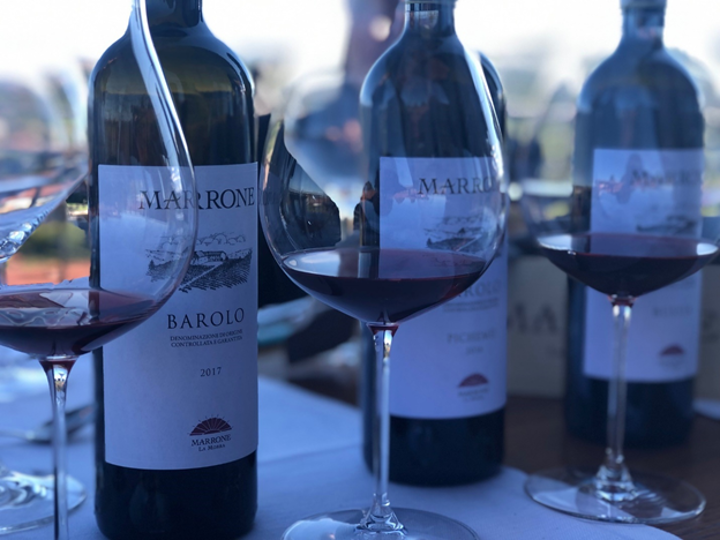
All European wine regions are confusing and complex because they are established in such ancient roots. You have to almost be a historian to understand the complexity and then decide the threads of their existence. There are so many ancient varieties of wine and some famous ones that are known worldwide.
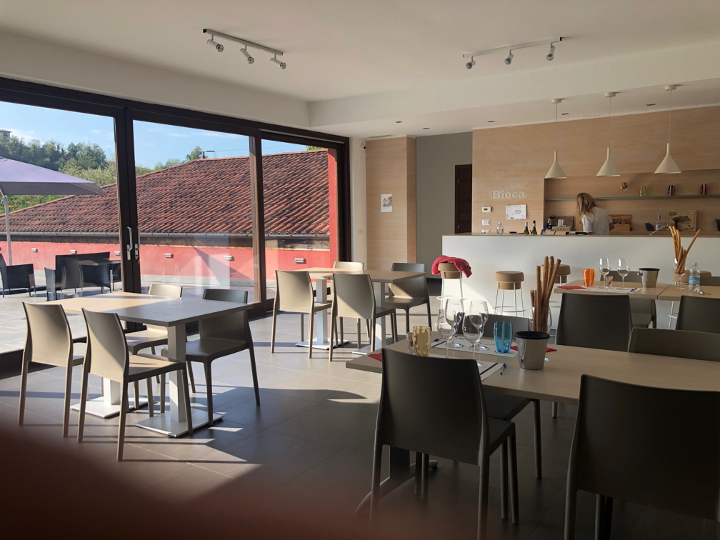
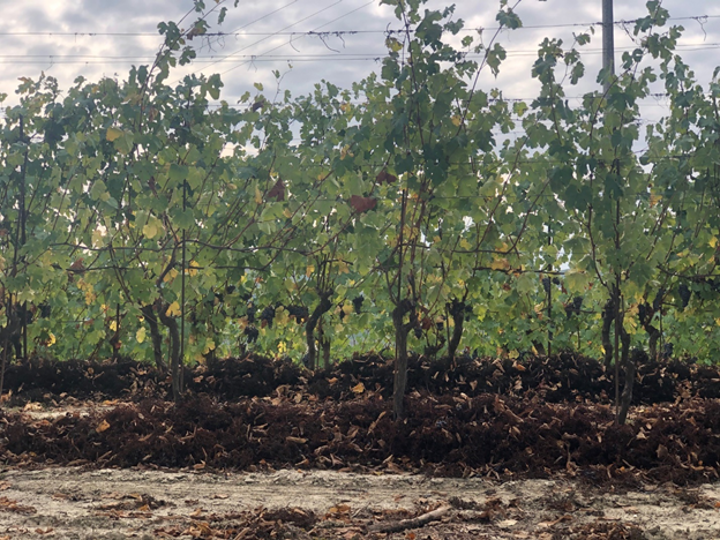
Wine tasting is not as informal as it is in the US. There are not too many tourists trying the wines all at once. Many vintners only entertain wine representatives and VIPs. Making an appointment can be very challenging. I was extremely fortunate that some of my wine reps helped me make appointments with these very distinguished wine families. Each wine tasting was an in-depth lesson that lasted between 3 to 5 hours!

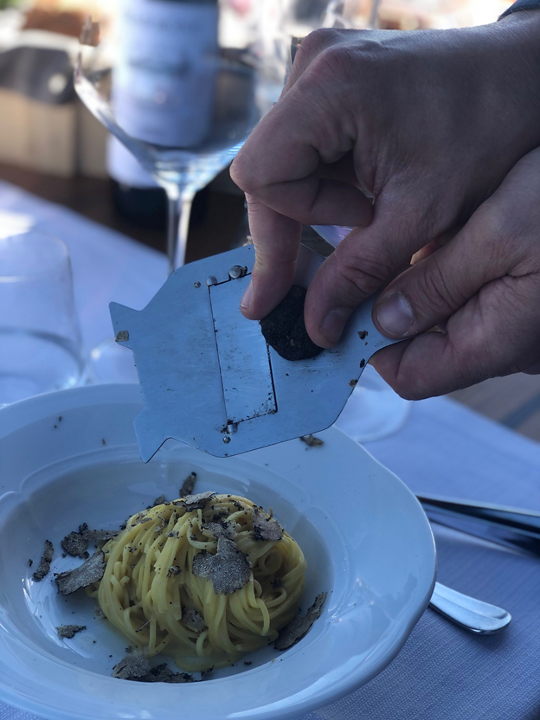
Marrone offered me a full lunch al fresco with my tastings!
- Aperitivo: Bruschetta with tomato, parsley and capers. Served with Dolcetto.
- Antipasti: Refined coleslaw with tuna and then princess pea pods mashed with sole. Paired with Chardonnay.
- Primi: Flan with a creamy cheese sauce with a sprinkling of hazel nuts. Paired with Nebbiolo d’ Alba.
- Secondi: Freshly made Angel hair pasta with an egg yolk and butter sauce. Paired with Barbaresco.
- Contorni: Pork loin with a pork and hazelnut reduction served with potatoes. Paired with Barolo Bussia.

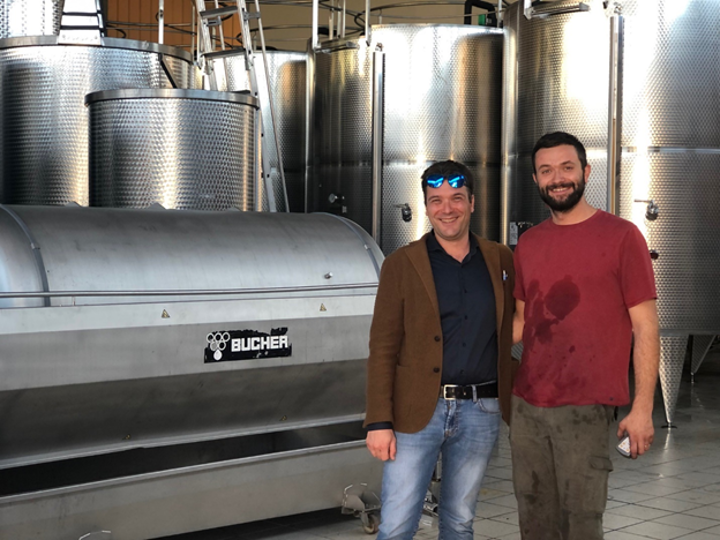
Back to the wine…
Let’s talk about decoding the labels. Most of the time the name of the winery is on the front label. Then each label will normally list the region or DOCG (Denominazione di Origine Controllata e Garantita – Denomination of Controlled and Guaranteed Origin), then sometimes the subregion or cru (very small plot of grapes.) Some Italian wines have a DOCG label on them. That means the grapes came from one cru or plot of land. If the bottle doesn’t have the Italian DOCG band the grapes can be harvested from a different plot of land.
Italian states where some wines are grown:
- Toscana – Tuscany
- Piedmont
- Puglia
- Abruzzo
- Sicilia
- Emilia-Reggio
Areas from a specific region/appellation that can also be a town or a village:
- Chianti
- Barolo
- Barbaresco
- Toscana
- Laghe
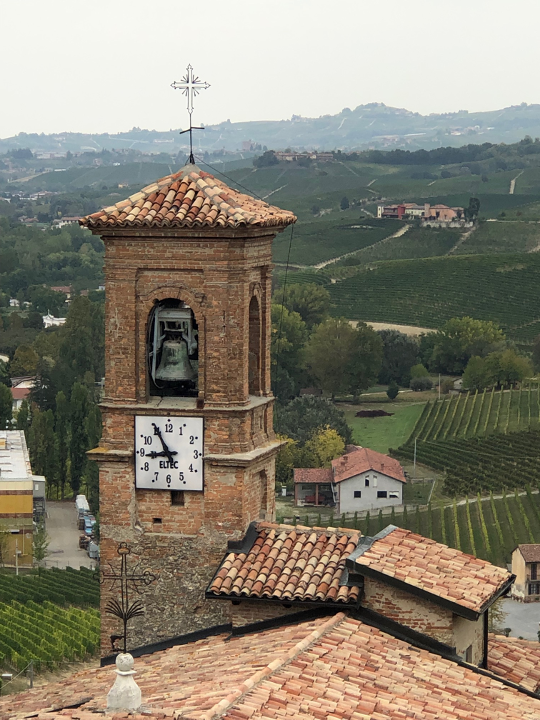
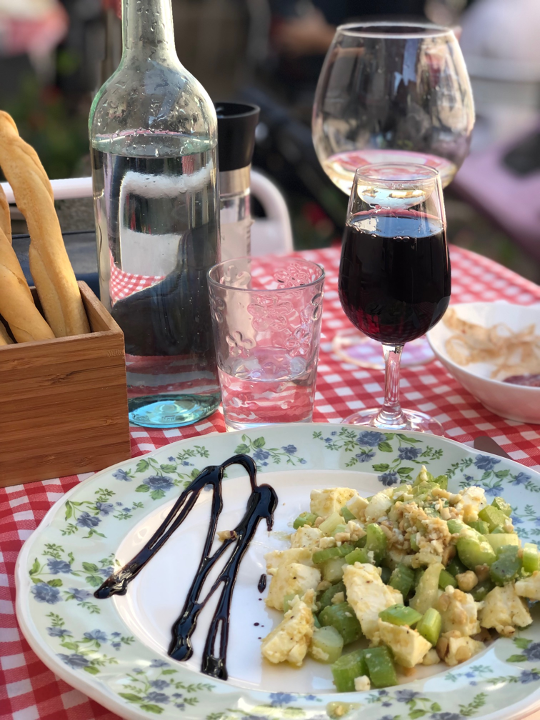
Sitting down with the Marrones, Rizzis, Michele Chiarlo’s wine tasting manager, and La Bioca’s Manager gave me the unique opportunity to learn about the wines of the Piedmont in detail. I saw not only the barrel rooms, but also harvesting equipment destemming grapes, steel tanks giving oxygen and cleaning the grape juice. I got to taste the juice at different times during its early fermentation, and I saw how hard all the families were working at harvest time. I was honored that they took this precious time to meet with me and take hours to explain every wine they produced. The wines are like their children. They take so much pride and effort to create each one for us to enjoy.
Rizzi, Barbara D’Alba:
Winemaker’s notes: Deep, full perfumes, elegant, well-balance and enduring, reminiscent of rose, undergrowth, and oriental spices. Very powerful bouquet. Fine structure accompanied by lively acidic freshness, sweetened by overall softness. Flavors conjure up Morello cherry and plum jam with a long finish.

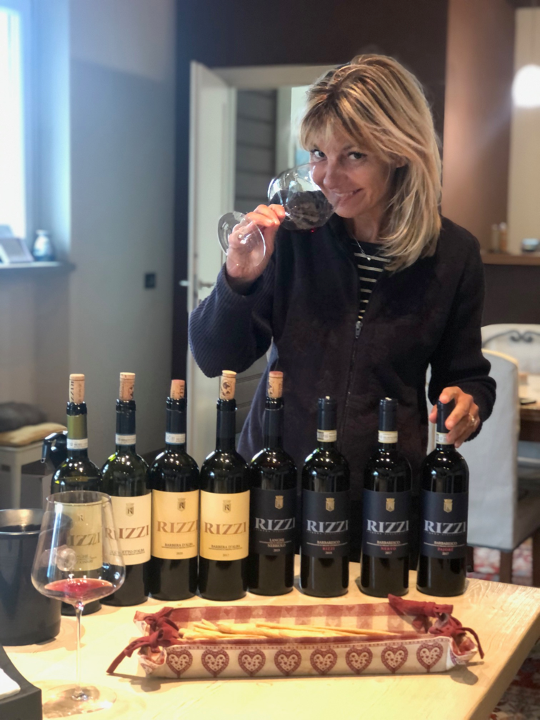
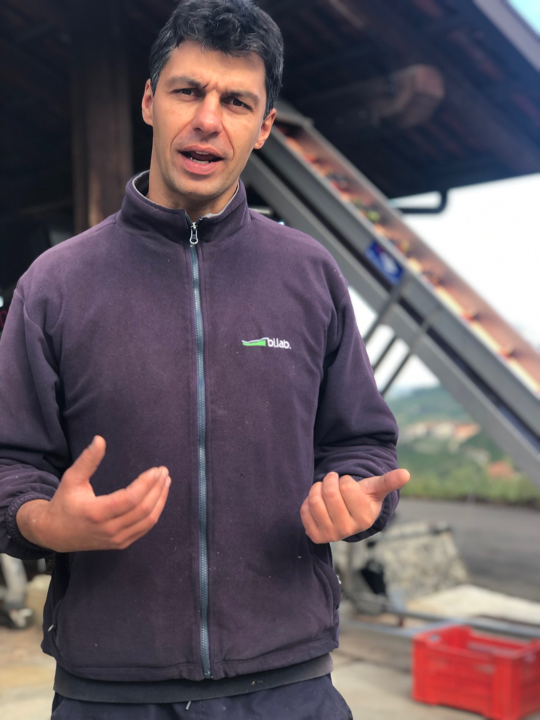
Subregions/Cru example:
Barolo:
- Bussia
- Cerquio
- Cannubi
- Ginestra
- Brunate
- And so many more…
These are only a few of the examples of the crus of Barolo. Each appellation has many crus.

Marrone, Barolo – Bussia. Wine maker’s tasting notes: pure raspberry nose with hints of mint and oregano, silky elegant palette of fresh blue berry and aniseed, leather and tobacco notes carried be a gorgeous sweet acidity. I was gifted this bottle by the owners of Marrone and shared it with Italian friends over homemade pizza. Barolo is packed with tannin and acidity that allows it to pair best with flavorful dishes such as prime rib, rib eye steak, veal chops, roasted goose, and venison.
Wine Advocate gives it 91 points.
Most of the time these are the indicators of which type of grape are used to make the wine but not always. For example:
Nebbiolo – the first step before Barolo, from the Piedmont. It spends 4 to 6 months in wooden casks.

Michele Chiarlo’s Langhe Nebbiolo. Tasting notes: Garnet red of medium intensity with brilliant reflections. Intense with good complexity and great elegance, hints of small black fruits, plums and violet. Pleasant impact, ample and balanced with silky tannins; highly pleasing and long lasting.
Pairs well with pasta with a ragu, turkey, and medium aged cheeses.
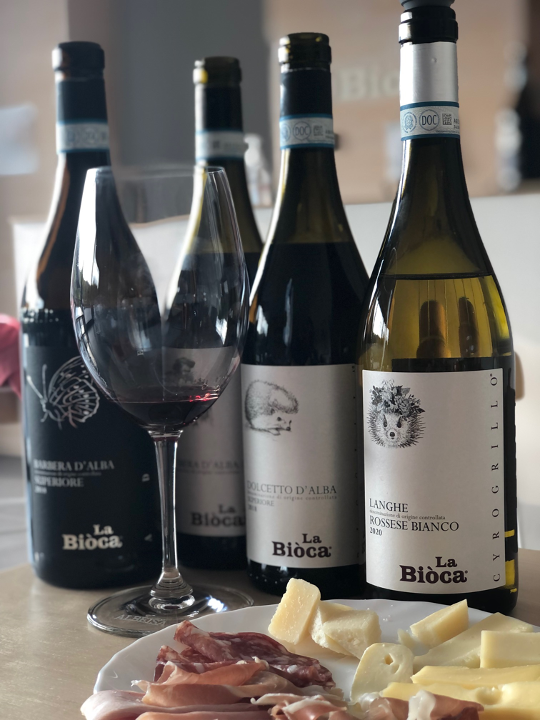
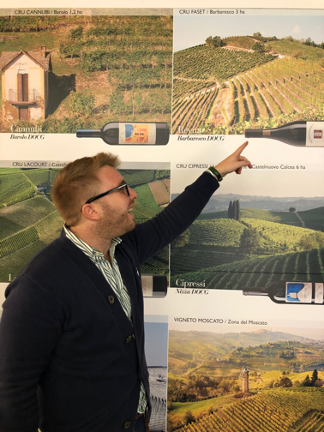

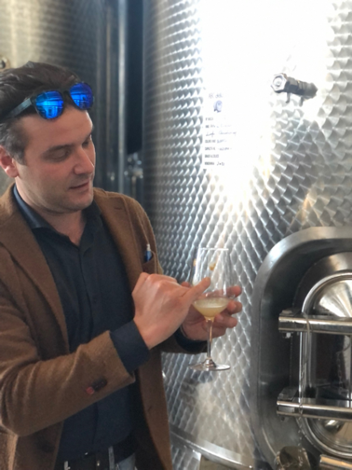
Niebbiolo grows in many parts of the hills in the Appalachians of Barolo but when you grow Niebbiolo on the premier plots on the south, southeast and southwest normally on the top of the hill this Nebbiolo grape is now called the cru for Barolo.
When you buy an Italian wine you might see many of these distinctions on the bottle: name of winery, area it was grown, and sometimes the specific cru. That way you can understand where the grape is from. Then also know that some expensive Italian wines spend more time in the wooden casks than aging in the bottle. Space in the wooden casks in Italy is like renting a penthouse in Traverse City. The longer you stay the more the cost. Understanding where specifically the wine was grown and how long it lives in the vintner’s wine cellar drives the cost. Learning about wine from any region is like melting an iceberg slowly! There are so many complex steps to creating wine and understanding wine.

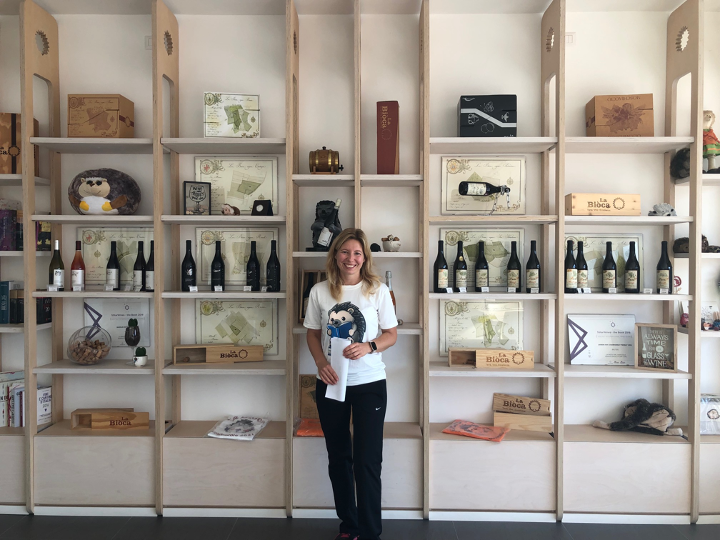
I’ve met with wine makers in this Barolo region. Now it’s the harvest time of the Nebbiolo grape. I’ve been seeing mountains of grapes being de-stemmed, being put into steel casks to start the fermenting process, and removal of excess skins and sediment. It’s my understanding that all the wine juice stays in steel for approximately 1 to 2 months. Each day the wine is cleaned and remixed. The first week the wine tastes like sweet juice, the next week a bit more fermented, then this continues till it’s ready to be put in French oak barrels. Each day the wine maker samples and tests the chemistry. Once in the barrels the wine is rotated and always tested.
Italian Reds we carry at Oryana:
Piedmont:
- Langhe – Vietti, Freisa: Deep ruby red. Intense aroma with fruity red and black berries and floral notes.

Toscana:
- Chianti
- Giuliano Rosali, Rossa di Toscana: Pale crimson in color, this wine reveals ripe cherry, cranberry, saddle leather and blackberry on the nose. The mouth feel is medium bodied with black pepper undertones. The finish is well balanced with the dark fruits, acidity and minerals in equal harmony. It was an ideal pairing with my artisan pizza.
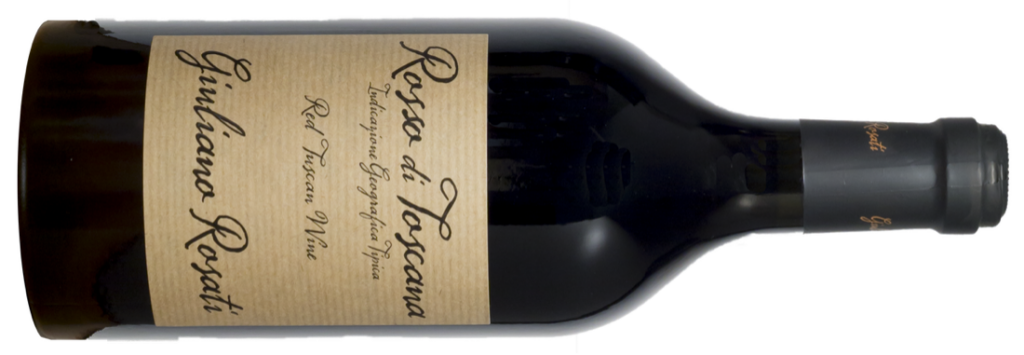
- D’Angelis , Rosso Piceno Superior – Montepulchiano: Rosso Piceno is a region in the Marche area of Italy producing wines made from a blend of Montepulciano and Sangiovese. Rosso Piceno Superiore is a smaller area in the southern part of the Marche considered the best of the Rosso Piceno DOC. De Angelis makes this delicious example that shows ripe berry and cherry with some earthy notes. Grilled foods and meats make a lovely compliment.


La Bioca, Barbara d’ Alba. Tasting notes: Ruby colored with pale amber tints, the nose is ripe and highly expressive, with rose petal, dark autumnal fruits and earthy notes. The palate is vibrant and ripe, with a fine texture and firm but very ripe tannins. Food pairing: game dishes, truffles, roast lamb with garlic and herbs.
Asti:
- Michele Chiarlo’s L’Orme – Barbera d’ Asti. Tasting Notes: Harmonious, with good structure and roundness, beautiful savoury finish. Pairs with Pasta with tomato, pizza, chicken, pork and turkey.
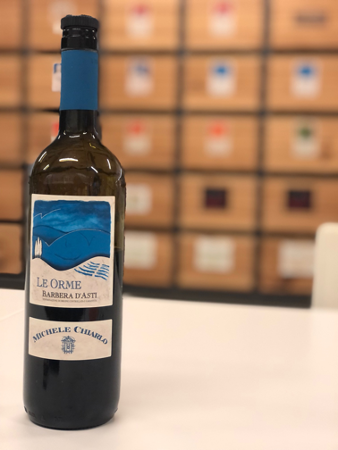

Thank you for joining me on a little tour of Italy’s Piedmont region wines, the place where the Slow Food movement started. This was my personal vacation but I could not go to this amazing region without tasting some wines. I appreciate the wine representatives and their partners that made my wine education and tastings possible. I am so grateful for the wineries that took me in for hours to explain their processes and the art of making their wines. I am very humbled that we can enjoy these wines at Oryana. I hope you try them out. I am very proud of our wine offerings at Oryana.
Lisa Perrine Brown, Beer & Wine Coordinator at Oryana
